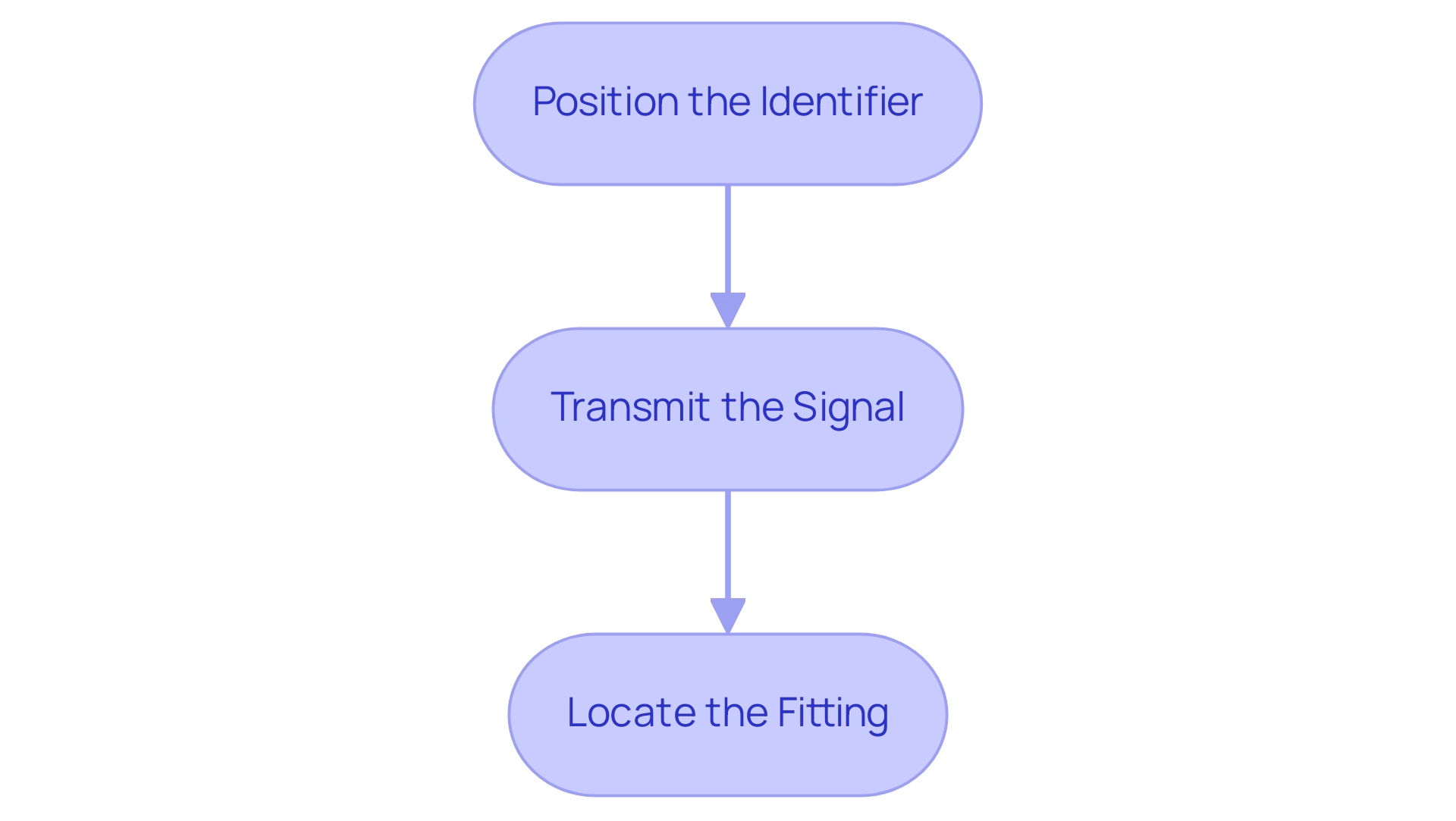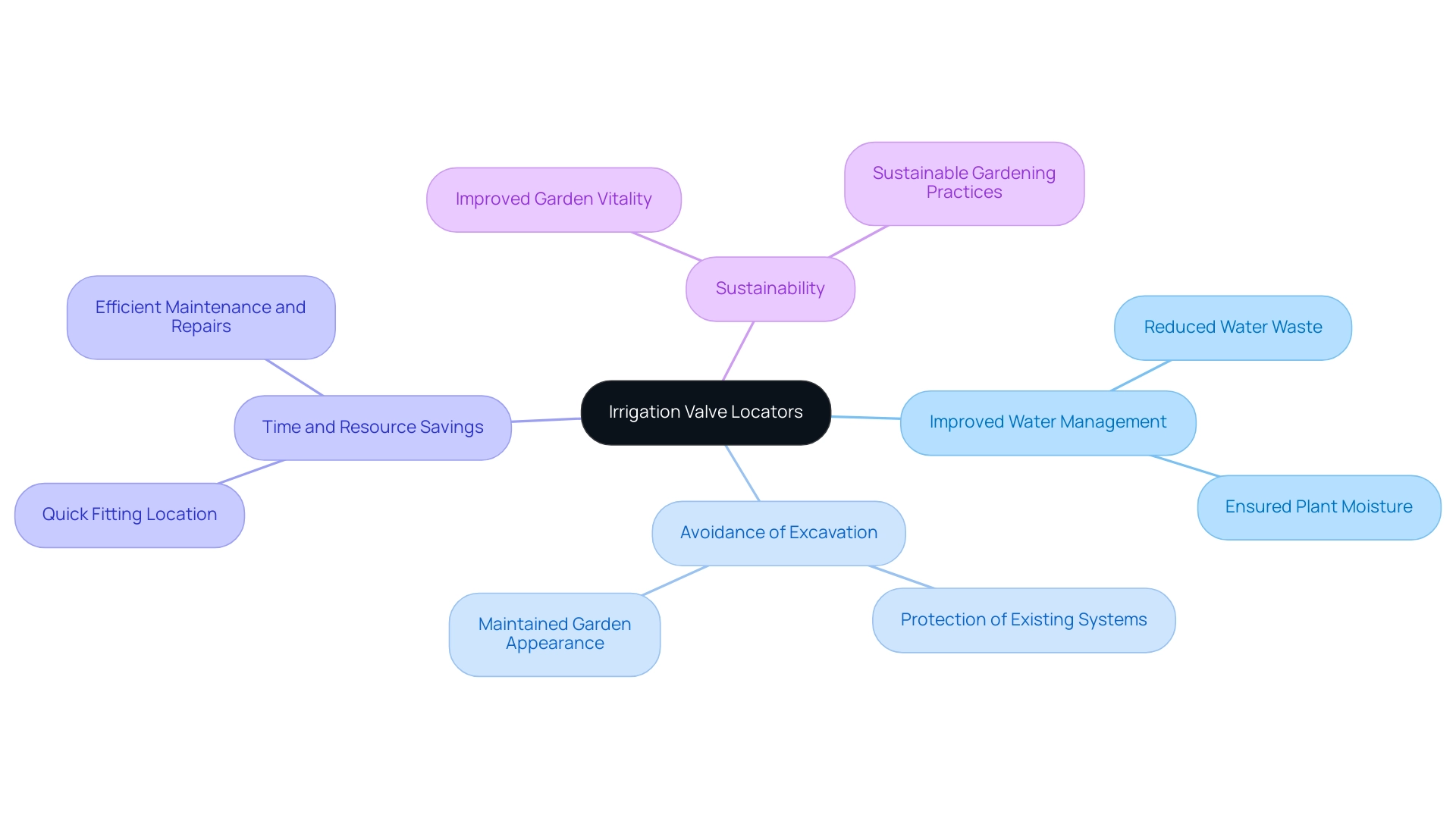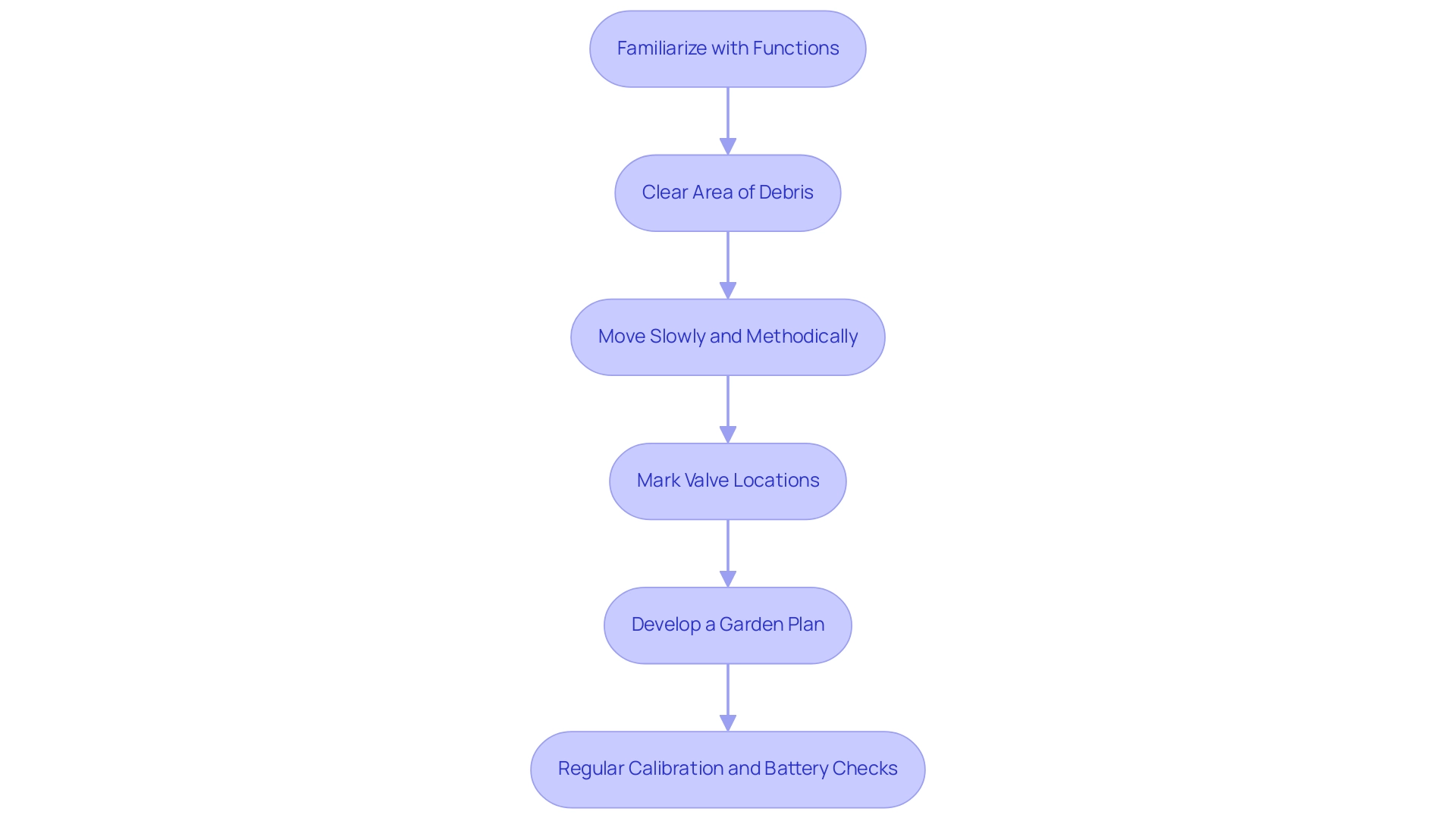Introduction
In the world of gardening, maintaining a lush and healthy landscape often hinges on the efficiency of irrigation systems. Yet, for many gardeners, the challenge of locating buried irrigation valves can lead to frustration and wasted resources. As these crucial components remain hidden beneath layers of soil or mulch, the risk of damaging existing infrastructure during searches looms large.
Fortunately, irrigation valve locators emerge as a game-changing solution, employing electromagnetic signals to pinpoint valve locations without the need for intrusive digging. This article delves into the significance of these tools, the common obstacles faced in valve identification, and best practices for utilizing locators effectively, ultimately paving the way for a thriving garden ecosystem.
What is an Irrigation Valve Locator and How Does It Work?
An irrigation device finder is a specialized tool created to identify and locate buried irrigation components within a garden or landscape. This device functions using electromagnetic signals, enabling users to identify the precise position of components without invasive digging. The procedure usually entails positioning the identifier above the suspected fitting site, which then transmits a signal that is recognized by the device, enabling the user to locate the fitting precisely. This accurate locating technique reduces the risk of harming water lines and other subterranean utilities, rendering it an essential resource for gardeners and landscapers alike.

The Importance of Irrigation Valve Locators in Gardening
Locators for water flow control devices play an essential role in gardening by greatly improving the effectiveness of water management. By enabling the straightforward detection of hidden fittings, these tools avoid needless excavation that can cause harm to current watering systems and disturbance of garden appearance. Moreover, they save time and resources by enabling gardeners to quickly find fittings for maintenance or repairs.
In situations where watering systems fail, the capacity to quickly locate the control can reduce water waste and guarantee that plants obtain the essential moisture without disruption. Consequently, investing in a water management locator can contribute to improved garden vitality and a more sustainable gardening practice.

Common Challenges in Locating Irrigation Valves
Locating hidden water control devices in established gardens poses various difficulties. Often concealed beneath layers of soil, mulch, or plant roots, these mechanisms can be incredibly difficult to locate, especially in the absence of clear markers or documentation. This lack of markers can lead to time-consuming and frustrating searches. According to recent statistics, approximately 30% of gardeners report difficulties in finding buried water control devices, highlighting the widespread nature of this issue. Carl Anderson, a passionate outdoorsman and skilled writer, stresses that without suitable tools specifically crafted for water source placement, gardeners risk harming water lines, which can result in expensive repairs and considerable water loss.
Regular preventive maintenance, including inspecting sprinkler heads for clogs and adjusting watering times according to the season, is crucial for keeping irrigation systems in top shape. However, even with diligent maintenance, small leaks can drastically reduce pressure, making it vital to inspect the system regularly. Testing repairs by turning the system back on and monitoring for further leaks is an essential step to ensure all issues are resolved.
A case study titled 'When to Call a Professional' emphasizes that complex issues like electrical faults or deep-rooted damage may require professional assistance. Consulting experts can save time and prevent further damage, ensuring a well-maintained landscape. In numerous real-life instances, gardeners have encountered considerable challenges in finding fittings, resulting in unwarranted frustration and costs. These challenges highlight the significance of being equipped with the right resources.
Integrating a can greatly ease the procedure, assisting in preventing possible issues and guaranteeing an effectively operating watering system. This tool is essential for any gardener looking to maintain their garden efficiently and cost-effectively.

Best Practices for Using Irrigation Valve Locators
To effectively utilize an irrigation device identifier, gardeners should adhere to several best practices:
- Familiarize oneself with the device's functions and settings before attempting to locate a mechanism.
- Clear the area of debris and obstructions to ensure accurate readings.
- When using the device, move slowly and methodically, allowing it to stabilize for the best results.
- Mark the locations of found valves for future reference.
- Consider developing a garden plan that includes valve placements to streamline future maintenance.
- Regular calibration and battery checks of the locator will ensure optimal performance, making it a reliable tool for all gardening needs.

Conclusion
The integration of irrigation valve locators into gardening practices presents a transformative solution for a common challenge faced by gardeners. These specialized tools utilize electromagnetic signals to accurately identify the locations of buried irrigation valves, eliminating the need for invasive digging. By streamlining the identification process, they not only save time and reduce frustration but also protect existing infrastructure, ultimately promoting a healthier garden ecosystem.
The challenges of locating buried valves are significant, with many gardeners experiencing difficulties that can lead to costly repairs and wasted resources. However, by employing irrigation valve locators, these issues can be mitigated. The ability to swiftly and accurately pinpoint valve locations ensures that maintenance tasks can be performed efficiently, reducing the risk of water waste and ensuring that plants receive consistent hydration.
To maximize the benefits of these tools, following best practices is essential. Familiarizing oneself with the device, clearing the area for accurate readings, and maintaining a well-documented garden plan can enhance the effectiveness of irrigation valve locators. As the gardening community embraces these innovative solutions, the path toward sustainable and efficient irrigation practices becomes clearer, paving the way for thriving landscapes and healthier gardens.
Investing in an irrigation valve locator is not just a practical choice; it's a step toward fostering a more sustainable gardening future.
Frequently Asked Questions
What is an irrigation device finder?
An irrigation device finder is a specialized tool designed to identify and locate buried irrigation components within a garden or landscape using electromagnetic signals, allowing users to find fittings without invasive digging.
How does an irrigation device finder work?
The device is positioned above the suspected fitting site, transmitting a signal that is recognized by the device to accurately locate the fitting, thereby minimizing the risk of damaging water lines and other underground utilities.
Why are locators for water flow control devices important in gardening?
They improve water management effectiveness by enabling the detection of hidden fittings, preventing unnecessary excavation that could damage existing watering systems, and saving time and resources during maintenance or repairs.
What challenges do gardeners face when locating hidden water control devices?
Water control devices are often concealed under soil, mulch, or plant roots, making them difficult to find, especially without clear markers. About 30% of gardeners report difficulties in locating these devices.
What are the consequences of not using suitable tools for locating water control devices?
Without proper tools, gardeners risk damaging water lines, leading to expensive repairs and significant water loss.
What preventive maintenance practices are recommended for irrigation systems?
Regularly inspect sprinkler heads for clogs, adjust watering times according to the season, check for leaks, and test repairs by monitoring the system after turning it back on.
When should a gardener consider calling a professional for irrigation issues?
Complex issues such as electrical faults or deep-rooted damage may require professional assistance to save time and prevent further damage to the landscape.
What best practices should gardeners follow when using an irrigation device identifier?
Gardeners should familiarize themselves with the device, clear the area of debris, move slowly while using the device, mark found valve locations, develop a garden plan for valve placements, and regularly check calibration and battery status for optimal performance.




